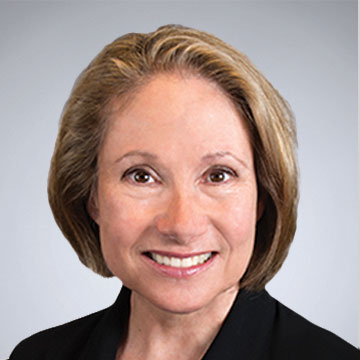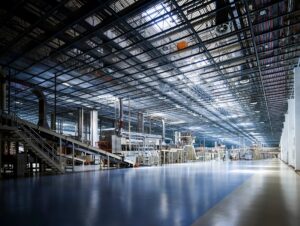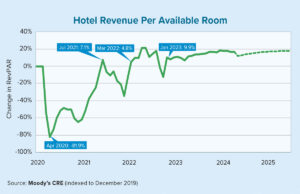All indications point to another scorching summer for the U.S., bringing new emphasis to the issue of climate change. Under such conditions, commercial real estate brokers will have clients facing pressure to respond to climate issues and to accommodate government initiatives aimed at reducing real estate’s carbon footprint.
While many in commercial real estate may think of such demands as a burden, brokers looking to the future can see opportunity in the movement toward green buildings by helping clients position their real estate portfolios for superior returns. One problem, however, is that the cost and availability of capital is constraining options.
“To solve the tight money supply, a growing number of institutional investors and large capitalized sponsors are using commercial property assessed clean energy funding (C-PACE).”
To solve the tight money supply, a growing number of institutional investors and well-capitalized sponsors are using commercial property assessed clean energy funding (C-PACE). Brokers should familiarize themselves with this type of financing to help clients understand how the method works and how it can be used to capitalize projects in this time of reluctant lenders and high interest rates.
Not only does C-PACE back new construction and renovation, it is being increasingly utilized in the development, renovation, recapitalization and rescue of properties. The program also offers significant benefits over traditional debt financing. Still a new market, this type of financing represents an opportunity for early adopters to use this stabilizing source of funds.
Growing financial niche
C-PACE is a green financing mechanism enabled by state policy that provides fixed-rate, long-term funding over the useful life of the equipment or for up to 30 years for construction projects that improve a building’s energy or water conservation. C-PACE is not a loan, but a voluntary special tax assessment repaid through property taxes that can be used for the financing of new construction, recapitalization and renovations. This tax assessment can fund up to 100% of a project’s total cost and is available for all types of commercial real estate assets.
Repayment of the assessment is collected with the regular real estate taxes through a self-amortizing schedule. As a property tax, the funding can transfer upon sale and cannot be accelerated for default or delinquency. The financing of eligible equipment includes all related work for the project so that there is no money out of pocket for the owner. C-PACE also can be utilized to retroactively fund completed work.
Other aspects that make such tax assessments attractive include that repayments can be deferred for years. This allows a long runway for the lease-up of a high-vacancy property or to accrue operational savings, tax incentives and rebates from the installation of upgraded energy generation or more efficient equipment.
Another positive is the tax assessment can be repaid as operating expenses, not capital expenses. Operating expenses are the daily expenses that a company incurs, not applied to any costs related to the production of goods and services. A C-PACE assessment is a charge or fee levied on a property for specific eligible upgrades. The assessment is the equivalent to a sewer tax and may be accounted for as an off-balance sheet expense by some tax advisors. Tenants can also repay the special tax assessment. Depending upon terms of leases, the annual assessment may be passed through to tenants resulting in zero-cost equity. This pass-through is a benefit to tenants as they also realize the decreased utility costs for efficiency upgrades which typically exceed the annual repayment of the assessment. Tenants also benefit from resiliency from grid outages by funding projects that provide on-site power generation.
Renovation and development
Many property owners have turned to C-PACE to fund mandated measures to meet code compliance, address deferred maintenance and to upgrade equipment to meet energy goals. The owners of these properties include public investment grade corporations, REITs and commercial real estate investors, as well as smaller companies.
They have found the program to be a low-cost financing source for heating, ventilation and air conditioning systems, as well as roofing, generators, building envelope upgrades and renewable generation projects. C-PACE is especially popular in states that allow resiliency projects such as wind, fire, flood and seismic upgrades. Financing of up to 100% of projects helps many property managers gain approval for developments that were previously denied due to low payback and high capital expenditure costs. These advantages have helped lead to the recent boom in this type of financing for real estate.
The C-PACE funding mechanism also has increasingly been used in gut renovation, adaptive reuse and repositioning. Early adopters were primarily in the hospitality industry, helping to support hotel conversions to multifamily housing. While such assessments have been previously limited for use in new construction by the difficulty of obtaining lender consent, there has been a paradigm shift among senior mortgage holders who are starting to use the funding source to lower-weighted average cost of capital and to decrease risk in undeveloped properties.
Since 2014, many property owners have used C-PACE to finance solar projects without utilizing capital expenditures. Anheuser-Busch, for instance, used the financing to pay for energy efficiency renovations for their Golden Road Brewing facility in Anaheim. C-PACE also has been used to fund an acute-care hospital in Rhode Island. Recently, the funding source has been used by properties in industrial, office, multifamily, hospitality and other asset classes to help meet the net-zero carbon emissions energy goals by 2050 that were adopted by the U.S. and many of the world’s nations.
Refinance and rescue
Brokers should keep in mind that one of the main benefits of C-PACE for a mortgage lender is the preservation of collateral value, or the amount of assets that have been put up to secure a loan. There is a growing acceptance of C-PACE by mortgage holders who must consent to the assessment in most states. In addition, there is a realization that the upgrades will result in healthier property cash flows with increases in net operating income.
With rising capitalization rates stressing the multifamily and office sectors, brokers and mortgage lenders are turning to this alternative funding source to provide a bridge option for their clients. Due to its unique structure as a property tax, the funding is generally available to assets that will not meet minimum debt yields and debt-service coverage ratios for many years.
Brokers need to know that this type of financing is providing funding to assets with strong risk profiles as well as those that are unable to find funding from traditional sources. It is anticipated that C-PACE will play a large role in refinancing and rescue of all asset classes in 2024, especially with the large pool of maturing CMBS loans this year.
● ● ●
Energy efficiency is becoming an important factor as owners are thinking about how to squeeze more value out of their buildings. Brokers need to be aware that green financing programs, such as C-PACE, give owners the chance to install new technology, including solar panels, efficient HVAC systems and LED lights, with repayment programs that tie the financing to property taxes. In turn, those improvements lower costs and help make buildings more profitable.
Governmental mandates for green properties as well as maturing debt in a high-interest rate environment is helping to fuel the growth of C-PACE lending. The market is always looking for ways to add value, and right now this loan alternative is emerging as a major source of liquidity for property owners and investors.
Author
-

Michele Pitale is a managing director at CounterpointeSRE. She heads the company’s PACE team, including overseeing many of the largest C-PACE transactions to date. Counterpointe Sustainable Advisors is an investment manager and portfolio company of Mass Mutual that invests at the intersection of the commercial real estate and energy industries through diversified ESG Infrastructure investments, including C-PACE, green mortgages and other clean energy investments. Since 2013, Counterpointe has had a major impact in reducing the commercial building sector’s carbon footprint and in providing resiliency to the nation’s infrastructure. Reach Pitale at (855) 431-4400.
View all posts







